1.1 Overview
This article refers to the address: http://
Since China's expressways generally adopt closed charging systems, various provinces and cities in the networked toll collection system generally adopt the manual cash charge (MTC) method based on IC cards as pass tickets. With the acceleration of the national series of gold card projects, financial electronics and the traffic card process, the demand for electronic payment in road tolls has been put on the agenda. As the name suggests, electronic payment is the use of electronic means to achieve currency payments, electronic payment in road tolls is to use non-cash payment to achieve toll payment, it represents the technical development direction of the road toll industry. The main ways to implement electronic payment in road tolls are billing cards, credit cards, prepaid cards, electronic wallets, and so on. How to alleviate congestion in toll stations, improve traffic efficiency, and provide high-level services to the public is an important issue facing China's high-speed transportation industry.
The electronic toll collection (ETC) system uses the wireless communication between the on-board unit mounted on the windshield of the vehicle and the microwave antenna on the dedicated ETC lane of the toll station to use the computer networking technology for background settlement processing. Electronic payment of tolls under parking conditions, thereby greatly improving the passing capacity and service level of toll stations.
Among the various electronic payment methods for road tolls, the electronic non-stop charging (ETC) technology based on the dedicated short-range communication (DSRC) technology has the advantages of exemption from cash transactions, rapid adoption without parking, effective improvement of traffic capacity, and greatly improved service level. The obvious features and advantages of simplifying charge management and reducing environmental pollution are widely favored. Since its introduction in the early 1990s, this technology has been widely used in North America, Europe, Japan, Australia, Singapore, etc. It has been proved to be an advanced non-cash payment method that will replace traditional manual charges. Charge technical means.
At present, except for Japan, the electronic charging technology schemes commonly used in other countries are mostly monolithic ETC systems. This is very suitable for an application environment where the open charge is the main, the economy is developed, and the ratio of ETC vehicles is relatively high. However, the operation mode of such a separate manual charging system and electronic non-stop charging system is likely to face the following problems for a large-scale highway toll collection system such as China: the scale of the road network is large, resulting in the scale of the ETC system. Large, one-time investment, long construction period, and high risk; most of the entrance toll stations and export toll stations have small traffic volume and few lanes. It is difficult to build a dedicated ETC lane on the civil construction, and the utilization rate is Uneconomical; due to the lack of backup ETC lanes at various toll stations, the reliability and robustness of the entire electronic toll collection system will not be guaranteed.
Japan's two-chip automotive electronic tag system uses dual antennas to establish ETC entry/exit lanes at all toll stations across the country. ETC constitutes an independent, closed network with high investment, ETC electronic tags and The IC card issuance model is complicated. It can be seen that the existing ETC technology solutions and operation modes in the world are not suitable for the new situation of networked charging under the unbalanced regional economic development in China. To successfully promote ETC charging applications in China, we need to make breakthroughs in the program.
In order to adapt to China's national conditions, the Ministry of Communications' "Temporary Technical Requirements for Expressway Networking Charges" requires a combination of "manual semi-automatic charges and electronic non-stop charging", and clearly states that "electronic non-stop charging system should adopt two-piece type." ETC electronic tag plus dual-interface CPU card high-security combined prepaid card solution to achieve compatibility and complementation between electronic non-stop charging method and IC card semi-automatic charging method, that is, further developed modular electronic technology based on ETC technology Charge technology.
The electronic toll collection system can greatly improve the traffic capacity of the station area, simplify payment procedures, and reduce congestion in the station area. At the same time, it can realize cross-regional and even nationwide networked electronic toll collection. It is the development direction of highway tolls in the next period, and should be accelerated to develop and apply.
1.2 System objectives
The overall goal of the combined electronic toll collection system is to provide users with non-cash methods in two modes, MTC and ETC, based on the combination of two-piece electronic tag-based charging technology on the basis of IC card cash charges. Electronic payment services use the most economical and effective means to achieve accurate charges, avoid traffic congestion, improve service quality, and reduce operating and management costs.
The advantages of the combined electronic toll collection system are as follows: the advantages of IC card charging and ETC charging are concentrated, and the effective combination of the manual mode and the ETC mode is realized in the networked charging system; the number of ETC lanes can be set as needed according to the actual situation such as the traffic volume. High system reliability, flexible investment and scale, easy to pilot and promote; provide convenient, fast, safe and reliable solution for prepaid card business of networked toll system; to solve the central city's ring road network and regional economic circle The traffic bottleneck of the inter-city road network provides an effective means; it is in line with China's financial card regulations and e-commerce and other countries to encourage development.
It can be seen that the combined electronic toll collection technology is the best technical choice for solving the construction of the networked electronic toll collection system under the current imbalance of domestic economic development. It not only solves the problem of electronic payment for highway toll collection, but also overcomes the difficulties faced by ETC in the initial management and promotion applications.
1.3 Application method
Typical application methods for users of combined charging systems under closed road networks are as follows:
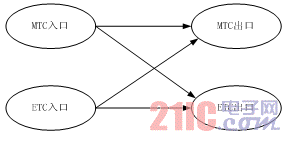
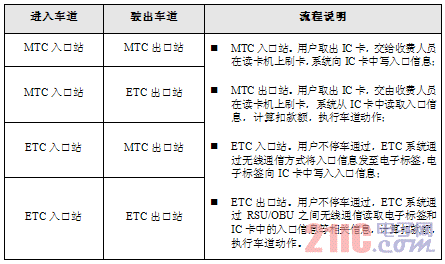
Combined electronic charging services include:
(1) Cash payment for parking methods
The cash payment for the manual charging method is realized by using the currently widely used non-contact logical encryption IC card as a pass ticket. We will continue to provide road users with a familiar cash card payment service for “passing the card and exporting feesâ€. On the one hand, it is the mainstream real demand, on the other hand, it can protect the existing lane system investment.
(2) Electronic payment (non-cash) for parking methods
Electronic payment by manual charging method using an IC card (CPU card or logical encryption card). The user saves the hassle of carrying a lot of cash and does not have to pay extra service fees. The charging unit also avoids the phenomenon of misreceived, missed, changed, and corrupted in cash charges. If you use the CPU card that complies with the PBOC specification, in addition to being used as a debit card, it can also be used as a stored value card. The chargeable lane is directly deducted from the e-wallet on the card, eliminating the drawbacks such as overdraft, system operation and management costs. And the risk can be greatly reduced.
(3) Electronic payment (non-cash) without parking
The electronic payment of the non-stop charging method is realized by the IC card plus the two-piece electronic tag. The vehicle quickly passes through the ETC lane, and the electronic tag reader (antenna) installed in the lane can quickly read and write the data information in the dual interface CPU card by means of the on-board electronic tag, thereby realizing free parking through the toll booth and completing the toll transaction.
It can be seen that the combined electronic toll collection technology is the best technical choice for solving the construction of the networked electronic toll collection system under the current imbalance of domestic economic development. It not only solves the problem of electronic payment for highway toll collection, but also overcomes the difficulties faced by ETC in the initial management and promotion applications.
The combined networked electronic charging technology is a new type of networked electronic charging technology. It uses the "dual interface CPU card" and "two-piece electronic tag" to realize the close combination of the manual semi-automatic payment method and the electronic non-stop charging method. The actual situation of traffic volume and other actual conditions set the number of ETC lanes, with flexible investment and scale, the system has more adequate backup measures, high reliability, easy to pilot and promote, etc., thus solving the monolithic electronic The charging system will face difficulties in the application of the networked charging environment.
1.4 Operation mode
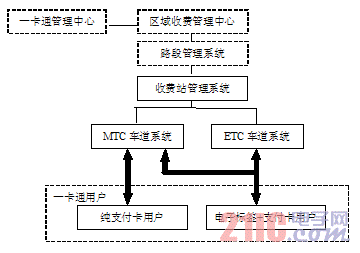
The operating mode of the highway combined toll collection system is as follows:
(1) The One Card Service Center is mainly responsible for the management of payment cards and electronic tags (including the issuance and daily management of payment cards and electronic tags, the background settlement of payment cards, etc.), and provides various customer services to users, and is responsible for unified technology. Regulations and related regulations on "networked charges, one-card line". As the operation center of the whole system, the card service center provides various perfect customer services to the users; provides settlement services for road and bridge owners; entrusts the issuance agent to issue stored value cards; entrusts the clearing bank to complete the clearing and debiting business.
(2) The road and bridge owner is the investment and construction unit of the toll system, responsible for the operation management and maintenance of the toll system. Luqiao owners accept the card service center to provide account clearing and other system services, and pay a certain percentage of settlement service fees to the card service center.
(3) The bank is mainly responsible for the settlement of accounts between the card service center, the road and bridge owners and the billing card users according to the transfer instructions of the card service center.
(4) The electronic payment card (IC card) and electronic label (OBU) used in the highway combined toll collection system are uniformly initialized and issued by the card service center, and the user applies for the electronic payment card at the service center or its designated business outlets. Electronic label purchase procedures. The one-card service center provides various services for users; for billing card users, it should also sign an account transfer authorization with the bank to ensure that the one-card service center can obtain the toll fee in time.
(5) If the user holds an electronic payment card and installs a two-piece electronic tag, you can use the ETC lane on the road section to enjoy the service without parking charge, of course, you can also pass the MTC lane; but if you only apply for electronic payment The IC card can only be passed through the MTC lane.
(6) The user's traffic and consumer transaction data in the MTC and ETC lanes are uploaded to the toll management center through the toll booth, and the charge management center performs clearing.
(7) The account card user needs to repay the payment management center regularly (for example, monthly), and the user of the stored value card (prepaid card) needs to recharge the IC card at the designated service outlet when the balance is insufficient.
1.5 System Architecture
When planning and designing a networked toll card system, the overall architecture of the system should be considered in terms of integrity, and should include both the regional toll system and the card service system. The regional toll collection system refers to a regional-level networked toll collection system, which generally includes a four-level structure of a lane system, a toll booth system, a toll collection center (area) system, and a toll collection center system. The one-card service system refers to the background support settlement system of the network charging and the issuance and user service system of the payment card.
The combined toll collection system is above the toll station level, which is completely consistent with the general toll system configuration. The difference is that in the front-end lane-level system, a unique "two-piece electronic label + dual interface CPU card" is adopted. As a core combined charging technology, a card can be accessed from any ETC lane or MTC lane. The foreground system framework is shown below:

1.6 ETC Lane System
1.6.1 ETC Lane Design Points
The ETC toll lane system is the key to the design of a combined toll system. According to the Ministry of Communications' "Temporary Technical Requirements for Networked Charges", the basic principle of ETC lane design is "inside, low speed, dedicated". This requirement is in line with the actual use of domestic highways. The combined toll lane system follows this principle and combines the technical features of the "two-piece electronic tag + dual interface CPU card" to design the ETC lane system into a relatively low-speed toll lane. In the case of ramp-type toll lanes, this lane system generally allows speeds below 60 km/h. In order to facilitate on-site management of tolls, the lane speed is generally limited to 30 km/h, and the speed limit is mainly through auxiliary traffic. Signs and safety control facilities (automatic railings) are implemented. At this design speed, the capacity of each ramp has exceeded 1,500 trips per hour, which is 5-7 times higher than the normal MTC lane (180~250 trips/hour), which fully utilizes the ability of ETC lanes to handle quickly. .
Adopting a dual interface IC card and a two-piece ETC electronic tag as a prepaid card medium for the network charging system;
ETC roadside read/write antennas and control systems that comply with international standards such as ISO and CEN;
A dedicated IC card charging machine supporting ISO7816 -1-2-3-4 and ISO14443 protocols;
In the closed road network, according to the size of the traffic, the electronic toll lane is set as needed. The combined electronic charging function features that the system can set the number of electronic toll lanes and charging methods according to actual needs:
In the toll station with large traffic volume and ETC lane, users can insert the dual interface IC card into the two-chip electronic tag to avoid parking mode through the ETC dedicated lane;
In the toll station where the traffic volume is relatively small and only the manual toll lane is provided, the user can use the dual interface IC card to pass the ordinary manual toll lane in the form of prepaid credit card;
For commuter vehicles that are fixed to and from toll stations equipped with ETC lanes, such as passenger and cargo transport vehicles, company shuttles, etc., it is possible to use a relatively inexpensive single-chip electronic tag to realize a parking-free way through the ETC lane.
The reliability design of the ETC lane control system is also an important aspect. The overall reliability guarantee needs to comprehensively consider the selection and architecture design of hardware and software platforms. At the same time, it must have the design of lane mode and control flow with sufficient fault tolerance. The ETC lanes in the combined toll lane system generally use the "dedicated" lane mode, so that any vehicles that fail to be properly handled and released in the ETC lane, including those that fail to enter the vehicle and system equipment (or in-vehicle equipment), are not traded. Vehicles, etc., are guided to the adjacent MTC lanes through auxiliary traffic guidance facilities (traffic signs, ground markings, isolation piers, traffic cones, etc.) and handed over to the manual toll system for subsequent processing. A simple illustration is shown below:

In the "dedicated" lane mode, the lane control process can be greatly simplified, so that the fault-tolerant design of the lane control system is relatively less difficult, and the reliability of the system is greatly improved. A simple lane master process is shown below:
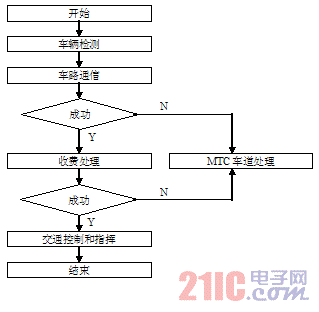
1.6.2 ETC Lane Setting Principle
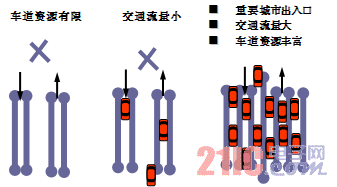
Note: Considering the advantages of ETC, the principle of setting up the combined ETC toll lane is as follows: (1) main line toll station; (2) important city entrance and exit; (3) other places with large traffic flow. ETC dedicated lanes can be set up in toll stations with large traffic volume or important city entrances and exits, and rich lane resources. Vehicle users can insert dual-interface CPU cards into two-piece electronic tags and pass ETC-dedicated lanes without paying for parking; Under the condition that the traffic volume is relatively small or the lane resources are limited, only the manual toll lane is set, and the user can use the dual interface CPU card to pass the toll booth in a prepaid manner. In this way, the number of ETC lanes can be set as needed, the system reliability is high, the investment and scale are flexible, and it is easy to pilot and promote.
In addition, according to engineering practice experience, the design principles of the combined ETC toll lane system are: (1) dedicated; (2) centered; (3) low speed. This mainly considers that in the two-chip ETC transaction, the processing flow of the electronic wallet is complicated (typical transaction time is 0.25 seconds), and at the same time, it is fully determined in combination with the security requirements of traffic management.
1.6.3 ETC Lane Layout

Note: The ETC toll island is 7 meters longer than the MTC toll island. The main ETC lane equipment is installed on the extended 7-meter island.
The main components of the ETC lane are: roadside read/write controller (RSU), in-vehicle (OBU), traffic lights, alarms, character adders, fee displays, automatic railings, lane computers (including monitors, keyboards, mainframes). ), lane controllers, canopy signal lights, vehicle detectors, ground sense coils, cameras, card readers, etc. See below:

1.7 Technical characteristics
(1) Strong scalability
The ETC lane can be gradually expanded according to actual needs. In the initial stage, the ETC lane can be set only at the main toll station of the expressway and the city entrance and exit toll station with large traffic volume and traffic bottleneck to realize electronic non-stop charging, improve charging efficiency and ease traffic pressure. . Most of the ramp toll stations have a small amount of traffic and a small number of toll lanes. It is difficult and uneconomical to set up an ETC-dedicated lane. It does not meet the principle of system configuration on demand. Therefore, the ETC lane is not set for the user group. After the demand is actually formed, expand the settings. In this program, the highway toll system has greatly reduced the cost of “one card line†transformation, and it is flexible in terms of capital investment and system scale, easy to pilot and promote, and the investment risk is greatly reduced.
(2) Real "one-card line"
After the user installs the electronic tag, the payment card can be inserted into the electronic tag, and the toll booth and the main line station with the traffic volume providing the ETC charging service can pass the ETC lane to realize the payment of the parking-free and cash-free payment card; A small ramp toll station can withdraw the payment card to the toll collector and pay the payment card using the parking method. Really realize that you can enter a closed highway from any one of the entrance lanes of any toll station (regardless of ETC or MTC) with a road and bridge toll card, and you can take any exit lane from any toll station (regardless of ETC or MTC) ) Payment is passed.
(3) Real e-wallet
In the traditional single-chip electronic label charging system and the ordinary contactless logical encryption IC card system, due to the lack of sufficient secure two-way authentication technology, it can only be used as a billing card, and real-time fund verification cannot be performed to the system operation. The unit brings a huge risk of overdraft. The combined charging technology solution uses a high-security CPU card as a storage medium and adopts a standardized two-way authentication technology, which is capable of performing an electronic wallet-based financial transaction offline in any charging point without real-time online connection and background verification. This technology is fully in line with the "China Financial Integrated Circuit (IC) Card Specification" issued by the People's Bank of China (PBOC), which provides a safe and reliable solution for the stored value card service for networked charges, and is in line with the national efforts. Advocated gold card engineering and e-commerce development direction.
(4) Support for multi-application extensions
The introduction of IC card electronic payment method also makes the combined charging technology have another obvious advantage, that is, the system has strong multi-application expansion capability, which can be seamlessly extended to the service area and refueled in combination with the characteristics of highway-related industries. Stations, convenience stores, catering, auto repair points, auto beauty services, etc., can also be extended to the city's bus card, taxi fare, vehicle management, driver management in public transportation management, transport management in transportation As for the use of a traffic IC card, it is really a traffic card.
For the first time, the system applied the national standard for short-range communication of electronic toll collection. After two years of research and engineering application practice, the national standard was supplemented and improved, and a complete engineering application specification system was formed. The core specifications were transformed into the specifications of the Ministry of Communications's highway networked electronic toll demonstration project.
Through the comprehensive improvement of the technical specification level and the engineering product level, the theoretical traffic speed of the ETC lane is increased from 40km/h to 70-100km/h, which greatly improves the service level of the lane.
The research and development of the electronic toll core equipment engineering, large-scale application of key technical indicators detection methods and procedures, the development of a complete set of testing, testing equipment and software tools, initially established an electronic toll core equipment and system testing platform . In the project research, design and engineering application process, the maturity and usability of electronic toll collection products and systems based on national standards have been greatly promoted.
From the technical solutions and standard specifications, as well as the implementation of the equipment, the national standard IC card is compatible with the Beijing political traffic card (including contactless logic plus password and CPU card).
Established a complete ETC lane marking system: guiding signs, vibration markings, increasing the proportion of yellow markings, ETC lighting indicators, etc., to achieve scientific guidance and guidance of ETC users.
In order to facilitate the user to recharge the renewal fee and expand the system service capability, the only system in China that can charge the electronic toll recharge service through the bank ATM terminal and the gas station quick recharge terminal is opened, and more than 3,000 terminals are opened, and the system service capability is increased to the order of one million users.
1.8 key equipment
1.8.1 Overview
In the combined charging technology, the toll lane system uses a dedicated short-range communication (DSRC) technology device based on the 5.8 GHz microwave band to implement electronic toll collection (ETC). The DSRC equipment is mainly composed of a roadside equipment (RSU) and an in-vehicle equipment (OBU). The roadside equipment mainly refers to a microwave read/write controller installed in the front end of the lane control system for information collection, and the antenna and the read/write controller are used. The vehicle-mounted equipment (OBU) mainly refers to a mobile device installed on a user's vehicle as a vehicle traffic information, and is composed of a two-piece electronic tag and an IC card. The composition of the DSRC equipment is as follows:
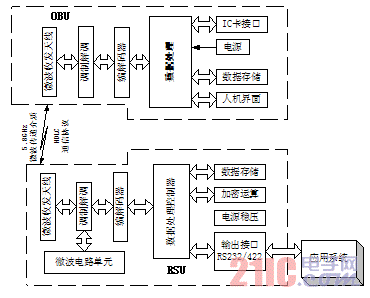
In the microwave read/write controller, the antenna is a microwave transceiver module, which is responsible for modulating, demodulating, encoding, and decoding data transmitted by the wireless link; the read/write controller is a module for controlling transmission and reception of data, and processing of signal transmission and reception. The microwave read/write controller exchanges data with the electronic tag in a wireless communication manner, collects and updates the charging information in the tag, and communicates with the computer through the serial port.
An IC card is also used in conjunction with the two-piece electronic tag in the DSRC device. The IC card can be a logical encryption card or a CPU card. The IC card is used as a pass and a pay card, and can be designed into two applications of a billing card method and a stored value card method according to operational needs. Under the billing card mode, it is exactly the same as the ordinary account card payment form, the operation is simple and fast, and the background electronic settlement is more attractive to the large fixed fleet user; in the stored value card mode, it is actually an electronic wallet. This has great benefits for reducing the operational risk and promoting it to a large number of social vehicle users. Usually, when IC card technology is selected, considering that the amount of funds stored in the IC card of the road toll industry is relatively large, the IC card recommends using a CPU card that complies with the PBOC financial security application standard.
1.8.2 Two-piece electronic label
Compared with a single-chip electronic tag, a two-piece electronic tag has a pluggable IC card that is used as an expansion memory. The two-piece electronic tag is mainly used as a vehicle identification card and a communication repeater. Only the physical parameters of the license plate number, the vehicle type or the vehicle are recorded in the electronic tag, and the vehicle identification information is provided for the lane system, and the information on the account number and the amount is stored in the In the IC card, data exchange can be performed between the electronic tag and the IC card. The ETC lane antenna can quickly read the data information in the IC card by means of the on-board electronic tag, thereby enabling parking-free through the toll booth and completing the toll transaction.
1.8.3 Dual Interface CPU Card (Mifare Pro Card)
The dual interface CPU card is a single-chip smart card that integrates contact and contactless interfaces. The contact and non-contact interfaces share the same microprocessor, operating system and EEPROM. The dual interface CPU card has two sets of communication interfaces, contact and non-contact, wherein the non-contact communication interface standard is divided into TYPE A type and TYPE B type. Since the TYPE A type communication method is fully compatible with the Mifare I standard, the TYPE A type dual interface CPU card is used in the system, so that the same IC card reading and writing machine can perform two types of card operations.
1.8.4 Non-contact IC card reading and writing machine
At present, the non-contact IC card reading and writing equipment that has been used in domestic highways has the ability to support dual-interface CPU cards for communication, or it can be easily equipped by reading and writing device software upgrades. However, since the dual-interface CPU card must be electronically traded on the basis of two-way security authentication, the IC truck-specific charging machine is required to preset the security authentication module (PSAM card) interface and the card seat, and the PSAM card is unified by the stored-value card issuing management organization. installation.
1.8.5 Electronic tag reading and writing device
The ETC equipment shall comply with the Provisional Regulations on the Application of Technical Conditions for Electronic Non-Parking Toll Equipment in Appendix IV of the Interim Provisions on Expressway Networking Charges of the Ministry of Communications.
1.8.6 Localization of DSRC equipment
The successful completion of the combined networked charging and electronic payment system based on two-piece electronic tags has greatly promoted the localization process of DSRC equipment, a key technical equipment for combined charging in China. At present, a few domestic manufacturers have mastered the high-end, independent intellectual property rights of the 5.8GHz microwave band two-chip DSRC technology, developed a domestic two-chip DSRC equipment (OBU electronic tag and RSU lane microwave antenna), and successfully applied to high speed Highway combined toll collection system construction project.
Portable Generator,Perkins Generator Set,Perkins Diesel Generator Set 120Kw,Perkins Diesel Generator Set 360Kw
Jiangsu Lingyu Generator CO.,LTD , https://www.lygenset.com